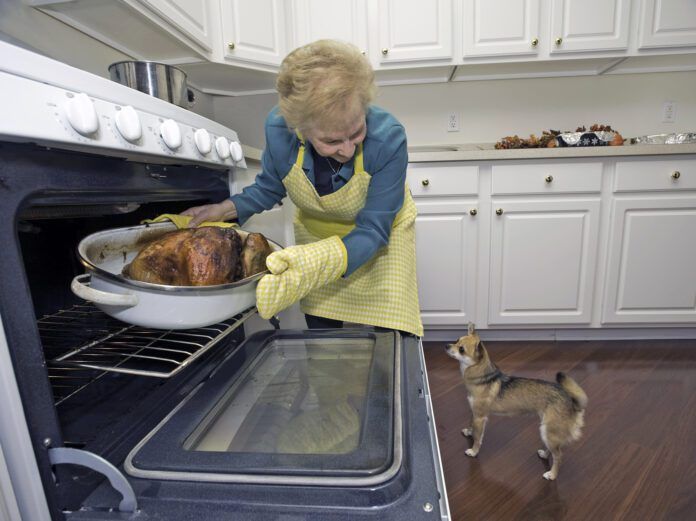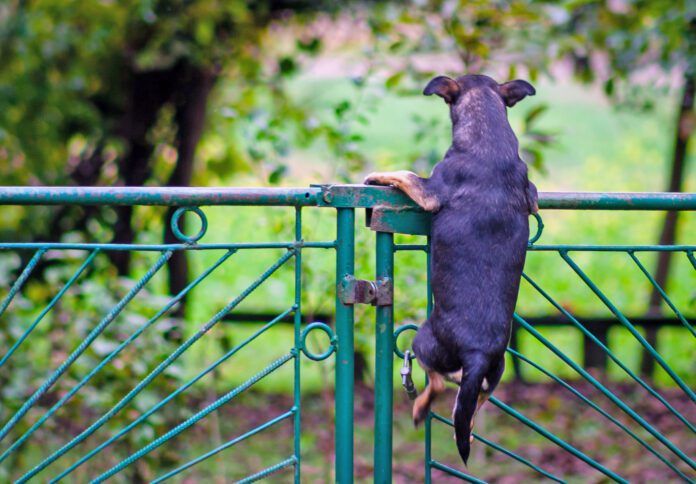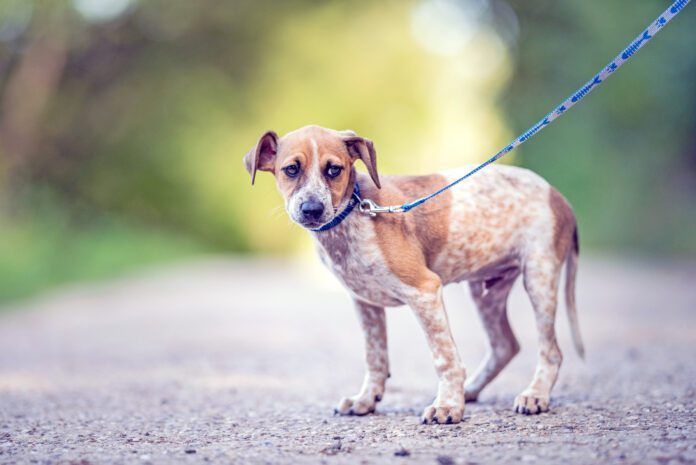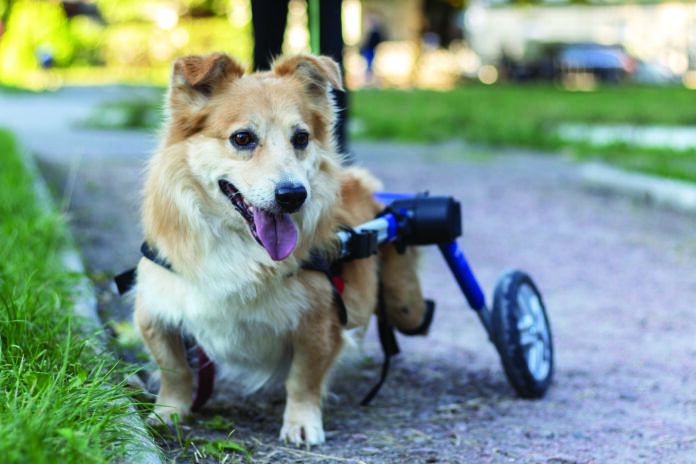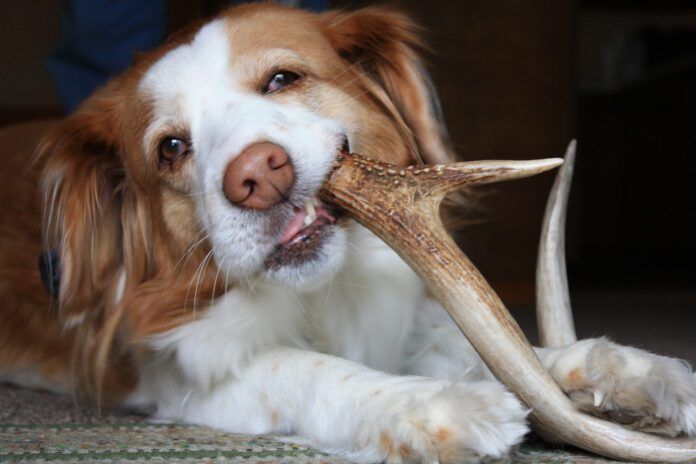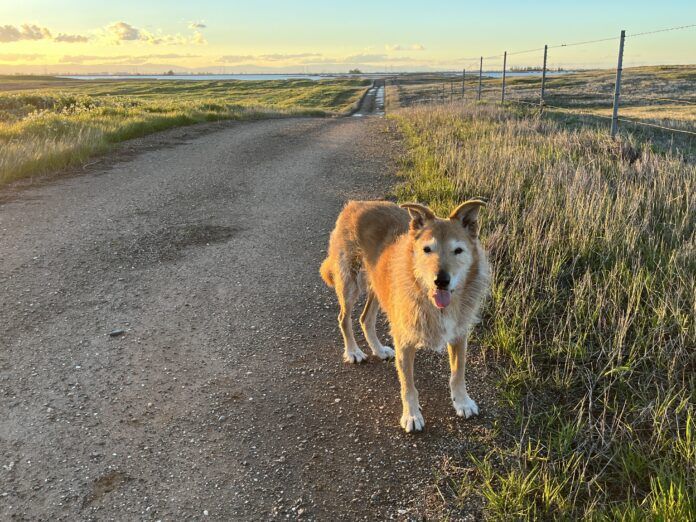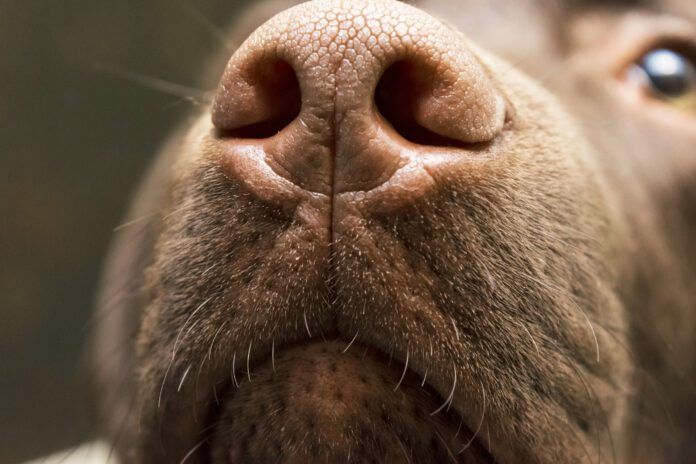Dogs bark for many reasons, but the overall reason is communication. You may just want to know how to stop your dog from barking, whether she’s barking at people, at you, another dog, sounds, or something else in her world, but the fact is, all that barking is simply your dog trying to communicate. As annoying as it may be, it’s better to understand why she’s barking and address the reason for it, rather than just telling her to be quiet.
Types of Barking
Strategies for modifying barking behavior vary depending on the cause. Here are the most common reasons for canine vocal communications, as well as the most effective strategies for dealing with each:
- Alarm Barking. The dog who alarm-barks may save you from danger: “The house is on fire!” She’s doing her job – letting you know there’s something to be concerned about.
Alarm barkers can save lives, but sometimes their judgment about what constitutes an alarm-appropriate situation can be a little faulty. Sometimes it’s just someone walking past your house.
To manage alarm-barking, reduce your dog’s exposure to stimuli that can cause arousal. Baby-gate her out of the front room, move furniture away from windows so she can’t jump up and see out, close drapes, or use opaque film on the lower half of the windows to obscure your dog’s view. Outdoors, you can install a privacy fence, attach a solid barrier to your see-through chain-link fencing, or put up an interior fence to block her access to the more stimulating parts of the yard.
You can use counter-conditioning and desensitization to modify alarm barking: Sit with your dog at the window. When someone walks by, let her look, feed a high-value tidbit, let her look again, feed again, until the passerby is out of sight. When you’re not there to feed, prevent access to windows that look out on passersby.
It’s also useful to teach a positive interrupt to stop your dog in mid-bark. (See “The Positive Interrupt,” below.)
THE POSITIVE INTERRUPT
The positive interrupt is a highly reinforced behavior that redirects your dog’s attention to you when she’s doing something inappropriate, like barking. You want your dog’s response to “Over here!” to be so automatic that she doesn’t stop to think, she just does it, the way your foot automatically hits the brake of your car when you see taillights flash in front of you.
Here’s how to teach it:
- Start in a low-distraction environment. Use a phrase such as “Over here!” as your interrupt cue. Say it cheerfully, then immediately feed your dog a very high-value treat, such as a small shred of chicken. Repeat until her eyes light up and hers ears perk when you say it.
- Practice in a low-distraction environment. Wait until your dog is engaged in a low-value activity – wandering around the room, sniffing something mildly interesting – then cheerfully say your interrupt cue. Look for an immediate interrupt in the low-value activity, and a dash to you for chicken. If it doesn’t happen, return to Step 1.
- Add distractions. In the low-distraction environment, gradually add moderate distractions and practice the interrupt. Slowly move up to major distractions. If you lose the automatic response, return to the previous step.
- Practice with real-life distractions. Walk around the block with your dog on leash. Use the interrupt when she’s sniffing a bush. Start with mild to moderate real-life distractions, but if a major distraction presents itself, give it a try!
- Use the positive cue to interrupt barking. When your dog automatically turns her attention to you in any environment in response to your cue, you have a valuable tool for interrupting her barking. Practice occasionally with mild distractions to keep the cue “tuned up.” And remember to reinforce her when she stops barking on your request.
Before you use the interrupt, however, investigate why your dog is barking. Perhaps your house really is on fire!
- Alert Barking. This is a less-aroused communication to tell you there’s something of interest; a hawk perching on the back fence, or Dad’s car pulling in the driveway. You can manage and modify in the same manner as alarm-barking, and use the positive interrupt. This is usually easier because the emotional level is lower.
- Anxiety Barking. This is a complex and challenging behavior to modify and manage, because true anxiety is a real panic attack – the dog truly cannot control her behavior.
Significant anxiety usually requires the intervention of a positive behavior consultant, and often, behavior modification drugs. You will need to consult with a professional behavior counselor and manage the environment to minimize exposure to anxiety-producing conditions while you help your dog learn how to cope. See “Extreme Anxiety in Dogs,” WDJ February 2022.
- Boredom Barking. The backyard barking dog is often lonely and bored. Boredom barking is usually continuous, with a monotonous quality. This barking is very annoying to neighbors and may elicit a visit from a local animal control officer.
The answer here is relatively easy. Bring the dog inside. Many outdoor barkers are perfectly content to lie quietly around the house all day and sleep peacefully beside your bed at night. If your dog isn’t house-safe, crates, exercise pens, dog walkers, exercise, and doggie daycare can keep her out of trouble until she earns house privileges. Employ environmental enrichment, such as interactive toys (food-stuffed toys and puzzles), to keep her brain engaged and her mouth busy. See “The Best Food-Dispensing Dog Toys,” April 2019, for some of WDJ’s favorites.
- Demand Barking. A demand barker gets what she wants (usually attention or treats) by making noise. An adorable little grumble can quickly turn into insistent, loud barks. Preempt the development of demand barking by randomly giving your dog attention and treats for being quiet, before she starts barking.
It’s easiest to extinguish demand barking early – as soon as you notice that your dog has learned to do this. The longer a dog has been reinforced, the more persistently she’ll bark when you try to ignore her. However, ignoring is the best answer. No treats, no attention – not even eye contact. The instant the barking starts, utter a cheerful “Oops!” and turn your back. When she’s quiet, say, “Quiet, yes!” and reinforce the quiet behavior by returning your attention to her.
When you’re extinguishing a behavior by ignoring it, your dog may initially increase her “I WANT IT!” behavior. This is called an extinction burst. If you stick it out and wait for the barking to stop, you’re well on your way to making it go away. If you give up and look at her, thinking extinction isn’t working, you’ve reinforced more intense barking, and your dog is likely to get more intense next time. Try to never give in when your dog is exhibiting an extinction burst, but reinforce as quickly as possible when she’s quiet.
- Frustration Barking. Dogs with a low tolerance for frustration bark persistently when they can’t get what they want. This is an “I WANT IT!” communication similar to demand barking, but directed at the thing she wants, rather than at you.
You can use the positive interrupt and counter conditioning to redirect frustration barking. If you consistently offer high-value treats in the presence of frustration-causing stimuli such as another dog yours wants to greet, your dog will learn to look to you for treats when the other dog is present rather than erupt into frustration barking.
- Greeting/Excitement Barking. If your dog hails you with hellos when you return home, shift into ignore mode. Stand outside and wait for the cacophony to subside, then enter calmly; no hug-fests or “I missed you!” sessions. Greet your dog when she’s calm and quiet. If she starts to bark again, mark the unwanted behavior with an “Oops!” and ignore her some more.
For high-volume greetings directed toward arriving guests, again, go into calm mode. Loud verbal reprimands just add to chaos. Use your positive interrupt and calmly put your dog in another room – then greet your visitors. Alternatively, use counter-conditioning to get her to anticipate treats rather than barking when visitors arrive.
- Play Barking. As other dogs – or humans – romp and play, the play-barker runs around cheerleading. If neighbors won’t complain and the other dogs tolerate the behavior, you might just let it be. With children, however, the behavior is not appropriate; for some dogs, excitement can escalate into play biting, so it’s best to remove your dog from the kids’ play area if she’s getting too aroused.
To modify play-barking you can try “negative punishment,” where the dog’s behavior makes the good stuff go away. When the barking starts, use a time-out marker such as “Oops!” and gently remove your dog for one to three minutes; a short leash attached to the collar, just long enough to grab but not so long that it drags, can make this easier. Then release her to play again. As she comes to realize that barking ends the fun, she may get the idea. Or not; this is a pretty strong genetic behavior, especially with herding breeds.
Another tactic is to teach your dog to hold a favorite toy in her mouth; it’s hard to bark with a toy in your mouth!
Be Proactive with Barking Modification
Uncontrolled barking can be frustrating. I know this all too well, with three vocal dogs currently in my family. However, our dogs sometimes have important things to say. One day I was engrossed in writing an article and our dogs were alarm barking ferociously in the backyard. I reluctantly got up to investigate. No, the house wasn’t on fire, but I did find a sick groundhog in the yard.
You want to be able to have some influence over your dog’s voice, but don’t lose sight of the value of her vocal communications; she may be saying something important. If you ignore her, she might do combat with a rabid skunk in the yard, a thief might steal the car out of the garage, or the house might burn down!


